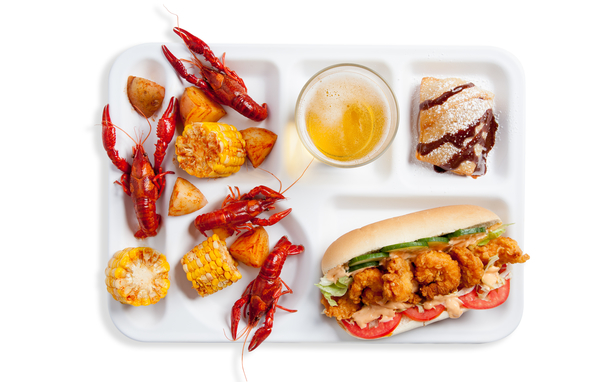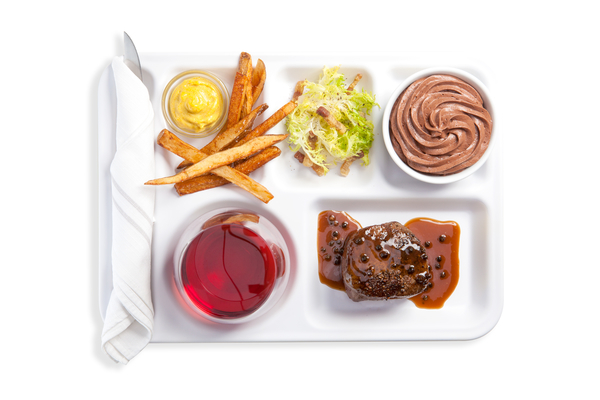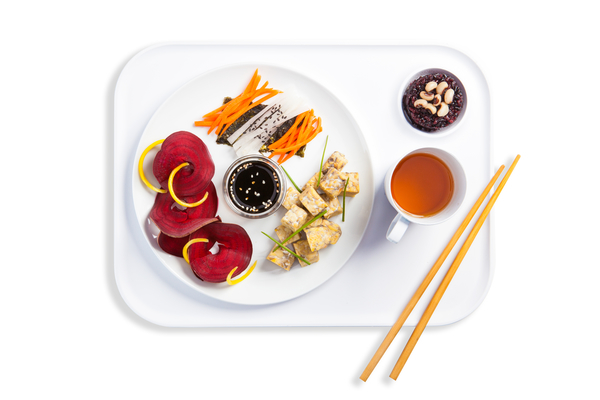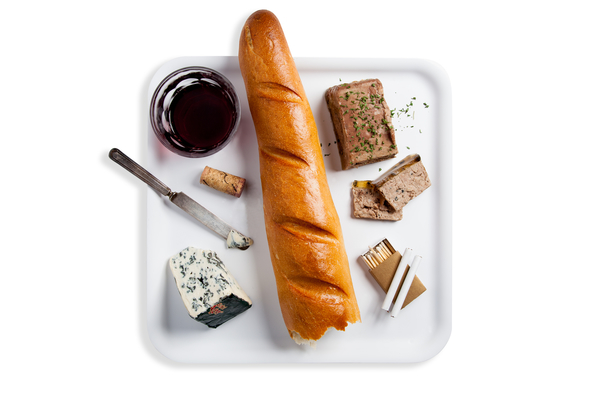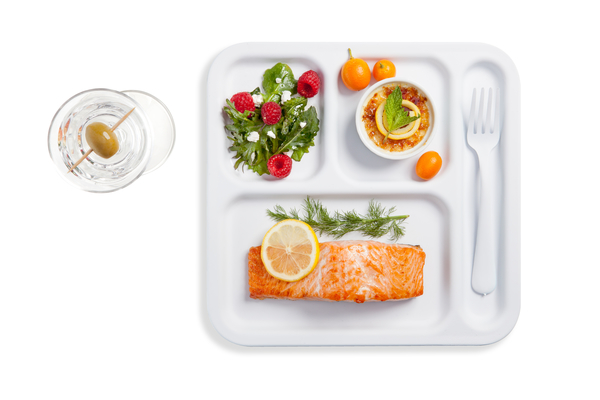Share
Winning Jobs Through Personal Projects
Jonathan Gayman is an editorial photographer and PhotoShelter member whose primary focus is food. Coming from a graphic design background (with lot...
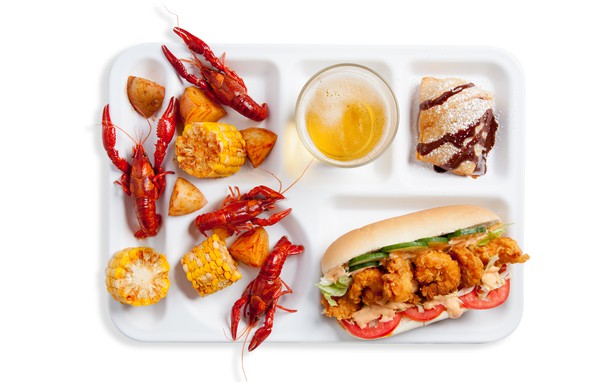
Jonathan Gayman is an editorial photographer and PhotoShelter member whose primary focus is food. Coming from a graphic design background (with lots of experience running a successful blog), Jonathan went full-time as a photographer in 2006. Based in St. Louis, it was during a meeting with a prospective client that he pulled out his portfolio and described for them a personal project he’d been working on: lunch trays. In the series of five images, shot from above, Jonathan re-imagined the classic hot lunch served on a tray. In one image, bright red crawfish, a massive po’ boy and a glass of beer sit on a white tray set against a white background.
A few months after the meeting, the client called Jonathan and asked if he could recreate the lunch tray shoot for their magazine. By taking a gamble and investing the time in a project that could showcase his personal style and creativity, Jonathan was able to push his career in a new direction.
We talked to Jonathan about what it took to make this project happen, how he decided to include the work in his primary portfolio, and how he used his resources creatively to turn a personal project into exactly the kind of job he’d like to shoot.
How did it happen that you got a job from this personal project?
St. Louis Magazine is not one of my main clients, but I’ve worked with them a couple of times. When I showed them the book that had the lunch trays, we were in a face-to-face meeting. As I was going through the book I explained that it was a personal project that I’ve been working on. They thought the images were eye-catching and different.
About a month or two later they called and said they had a new lunch tray project and wanted me to shoot for it. The job was for a local health food chef who was doing lunches for one of the local charter schools. The concept wasn’t exactly the same as what I’d done, but they wanted me to replicate the same style.
What was your goal in doing that lunch tray project?
I always have a greater goal in mind when working on personal projects. Right now I’m doing a lot of editorial work. I’ve been shooting food just over two years now, and before that I was still doing a lot of corporate portraiture. One of the goals of this project was to broaden my scope to the more lucrative commercial area. I like to keep in mind when doing personal projects that I’m doing it not just for me but also to have work that can speak to the type of clients that I want to work with and show the type of work I want to be doing.
How did you decide to treat it as a professional shoot?
The idea to do this lunch tray project was something that I had been batting around. I keep a notebook where I write down concepts and things that I want to shoot. I was getting into the idea of this project, and it crossed my mind that I could do it all myself, but the end product wouldn’t be very shiny. So I decided to amp it up a little bit and I brought in a food stylist. She is new to the field and was looking for experience so it was a perfect excuse to try working together to see if we had chemistry. This is another big thing when working with a food stylist, because it has to be someone you can work with.
Together we walked through the project like it was a commercial shoot, as if we had this brief and wanted to do five shots (a number we got down from seven).
It turned into a good experience on a lot of different levels. The end product turned out well, I got to make the images I liked, and the food stylist ended up getting another commercial gig out of it, too.
Spending time and money on a personal project could seem like a gamble. Did you factor it into a marketing budget, and did you have a specific return on the investment that you were hoping for?
The investment was pretty minimal on this project. The food stylist agreed to work as a test, and the food wasn’t a huge expense. I worked it all into my marketing budget.
I wasn’t looking to gain a whole lot directly from the project. I wasn’t expecting to get a job based specifically on those images. It just worked out that way. And that one job pretty much covered the cost of the whole project.
When I’m doing these personal projects the time investment is the biggest expense. It’s always hard to block out time to do a personal project, so I treat them like regular assignments. I put them in my calendar and keep them in my database. If I don’t, they just don’t get done.
How did you decide to include the personal project in your main portfolio?
The two books I usually bring are “food and lifestyle” and “corporate portraits.” Sometimes people want to see how I do portraiture. So when they, say do you only shoot food? I can respond, “Well, I do portraiture; do you want to see it?” As far as personal projects go, though, I just fit it in wherever it works.
How do you decide what personal projects to include in your portfolio?
On my website I have personal projects and non-personal projects. I try to cycle images in and out. I have a scheduled monthly portfolio review on my to-do list. It doesn’t always happen, but it’s on my list, and I get an alert at the beginning of every month. I don’t do a full refresh — I just like to be constantly thinking about what’s working and making sure that the site is up to date. I do think that there should be some consistency on the site. If someone visits randomly and then comes again two months later and doesn’t see anything that they recognize, it’s like they’re coming for the first time. Looking at the site once a month also helps me to see an image that’s maybe not so strong. I can say to myself, “OK, you’ve been hanging onto this image too long. You put it up because you thought it was cool a long time ago, but maybe it’s time to take that down and replace it with something better.”
Check out more great work from Jonathan Gayman by visiting his Beam portfolio website here.
